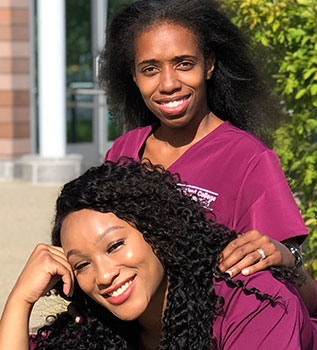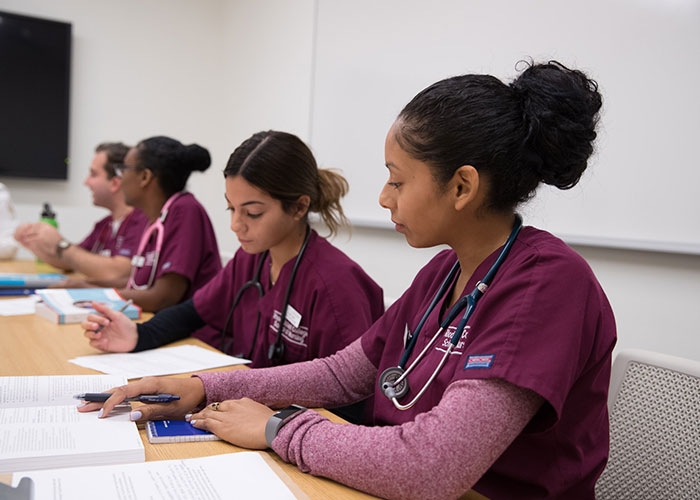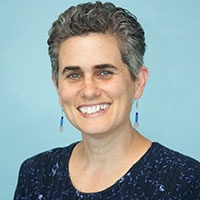RIC’s School of Nursing Takes Active Role in Diversity & Inclusion
- News & Events
- News
- RIC’s School of Nursing Takes Active Role in Diversity & Inclusion

Patrice Turnipseed, co-founder and president of the Multicultural Student Nurse Organization

In the wake of the most recent murders of unarmed black men and women and the subsequent worldwide Black Lives Matter protests, nursing students Patrice Turnipseed and Jayana Greene were inspired to step away from the sidelines and become advocates. In fall 2020 they founded the Multicultural Student Nurse Organization (MSNO).
"Our mission is to serve as student leaders, advocates and mentors for nursing students of color at Rhode Island College," says MSNO President Patrice Turnipseed.
“We want to bridge the gap between nursing students of color and nursing faculty and staff to ensure that students of color are equipped with equal opportunity and adequate resources to successfully complete the nursing program. Ultimately we want to create a culture in the School of Nursing that embraces diversity and is deliberate about inclusion," she says.
First, however, Turnipseed and Greene had to fight for inclusion of their own organization among the roster of student organizations.
"When we submitted our application to Student Community Government to approve our organization, we were turned down at first," Turnipseed says. "We were told that an organization like ours already existed – the Student Nurse Association. However, we don't believe that student organizations are a one-size-fits-all. We are a multicultural student organization. We believe that the faculty and staff in the School of Nursing, who place cultural competence as a requisite skill, will be better equipped to prepare students for real world situations by closely working with an organization of students who live these experiences daily."
MSNO comprises Latinx, Asian, African-American, African and Indigenous students of color. One of MSNO's first orders of business was to "bring a level of awareness to the School of Nursing about the experiences of students of color." This was achieved via a panel discussion made up of five MSNO members and held during a virtual faculty development workshop.
"We titled the panel 'Who Am I?'" she says, "and we shared our personal stories and experiences as students of color in the School of Nursing."
"When we talk about diversifying the nursing workforce, we need to ask why there is a lack of diversity," says Turnipseed. "Why are student nurses of color struggling? What is different about their experiences than their white counterparts? What can the School of Nursing do to help students of color succeed?"

"Some of us are first-generation college students or English is our third or fourth language," she says. "If I am taking an exam and my second language is English, I have to first read the question in English and then translate it in my head into my own language in order to understand how to answer it in English."
The five MSNO members addressed ELL issues, implicit bias and other issues that can impede academic success. They pointed out the disproportionate number of course and standardized test failure rates among nursing students of color and ELL students. They expressed the need for inclusiveness and cultural competence in courses across the nursing curriculum and the need for more diversity among faculty and students.

"What the faculty heard moved them deeply," says Assistant Professor of Nursing Deborah Kutenplon, who assisted in organizing the presentation. "I can't tell you how many emails I received from faculty thanking the students for putting it together."
Kutenplon is chair of the School of Nursing's Diversity and Inclusion Taskforce, an organization founded at the same time as MSNO and that works in partnership with MSNO. Kutenplon says both organizations were met with enthusiastic support from the School of Nursing's new dean Carolynn Masters.
"Dean Masters, Patrice, Jayana and I felt that we needed both a student group and a student/faculty group working on these issues in collaboration," Kutenplon says.
“The taskforce is made up of faculty and students and has three subcommittees: The first provides academic support for students of color and ELL students," says Kutenplon. "The second focuses on faculty development to help faculty become more equipped to address issues of diversity and inclusion and to teach cultural competence in their courses. And the third focuses on supporting faculty who are integrating into their courses the knowledge and skills students need to be prepared to provide culturally competent care."

Together, the taskforce and MSNO have already achieved much in one semester.
MSNO asked for and was provided study groups led by professors in each subject area that are more personalized. They organized workshops for nursing students on topics such as test taking and time management. They asked for and were given a voice in decision making within the School of Nursing. MSNO members now sit on all three of the Diversity and Inclusion Taskforce subcommittees, as well as the admissions committee, the curriculum committee and the dean's advisory board committee.
At the same time, the Diversity and Inclusion Taskforce is making strides. The school has mapped out its courses and examined what it can do to expand upon teaching diversity. Faculty also have access to a diversity and equity toolbox, which is a list of websites, online resources and activities to further faculty development and to use as a resource with students.
"The Black Lives Matter movement opened doors and made people who weren't paying attention to these issues more willing to pay attention," says Kutenplon, who represents Rhode Island College on the national American Association of Colleges of Nursing Diversity, Equity, and Inclusion Committee. "Establishing this taskforce, in light of the Black Lives Matter movement, was a lot easier than it might have been three or four years ago. The movement focused the attention of white people in power and made them start to think that it's time we really addressed these issues. We can't keep pushing this to the bottom of the agenda."
Indeed, diversity and inclusion are issues that require the strength of a community. It can't be done alone. Together, MSNO and the Diversity and Inclusion Taskforce are making a difference.
